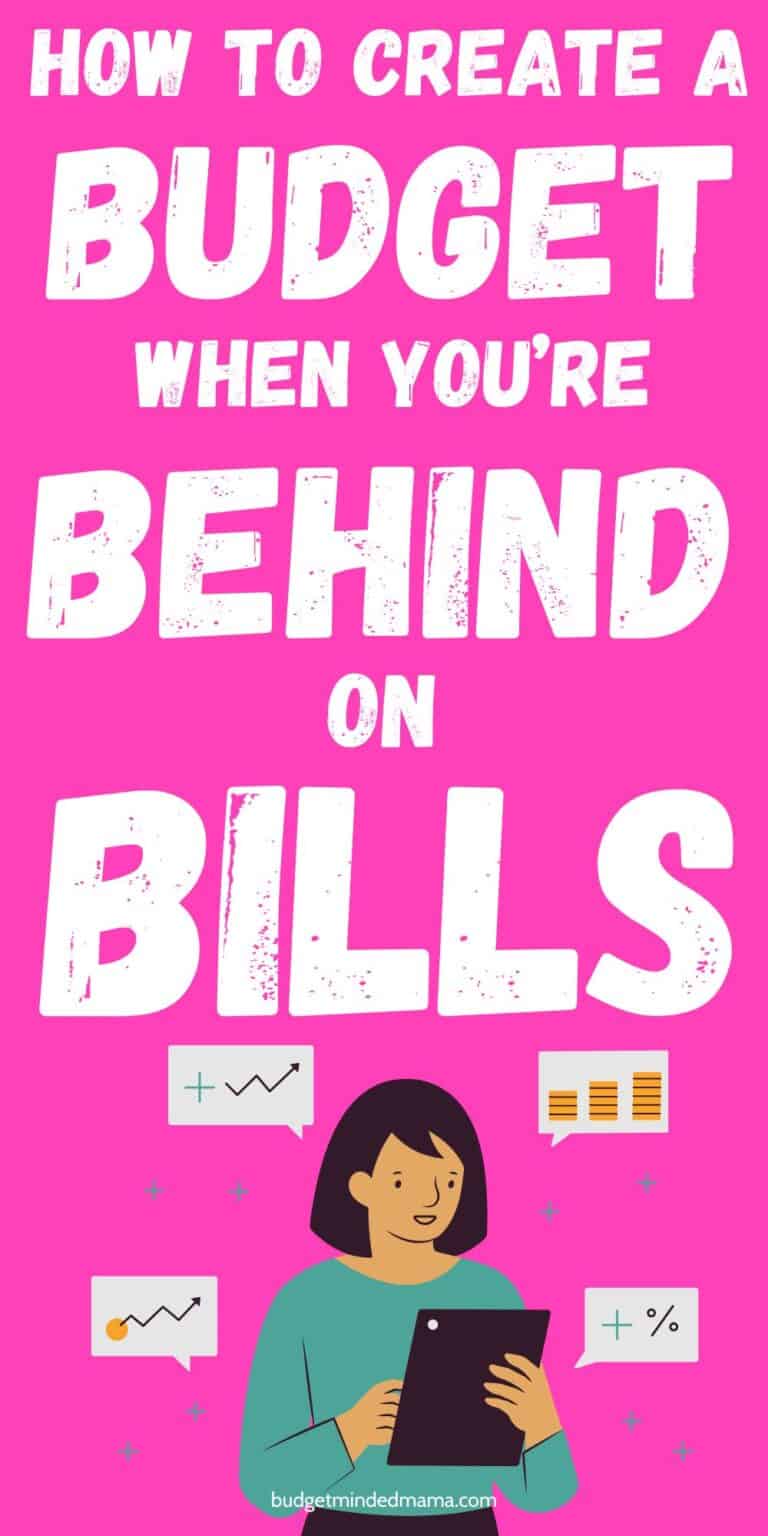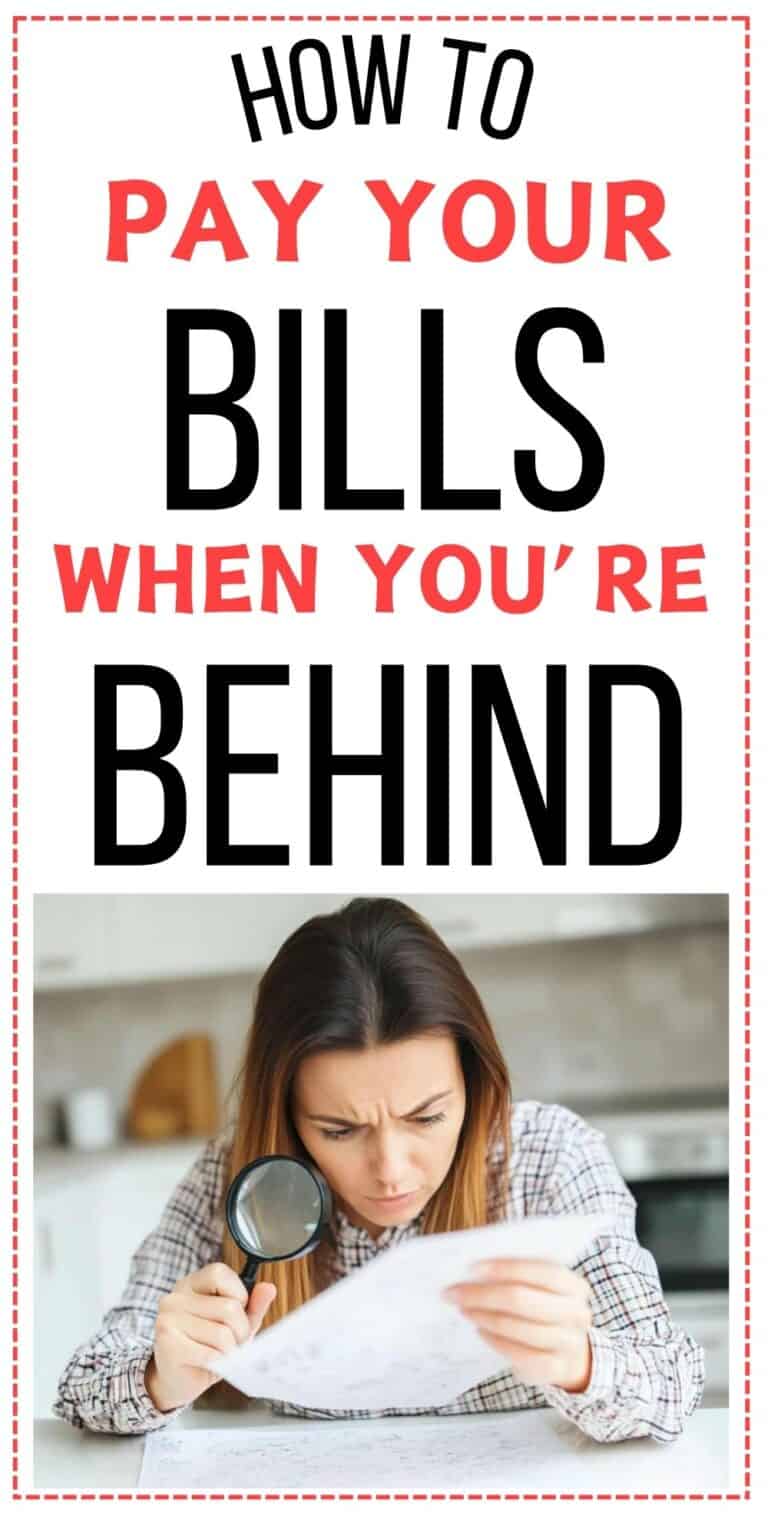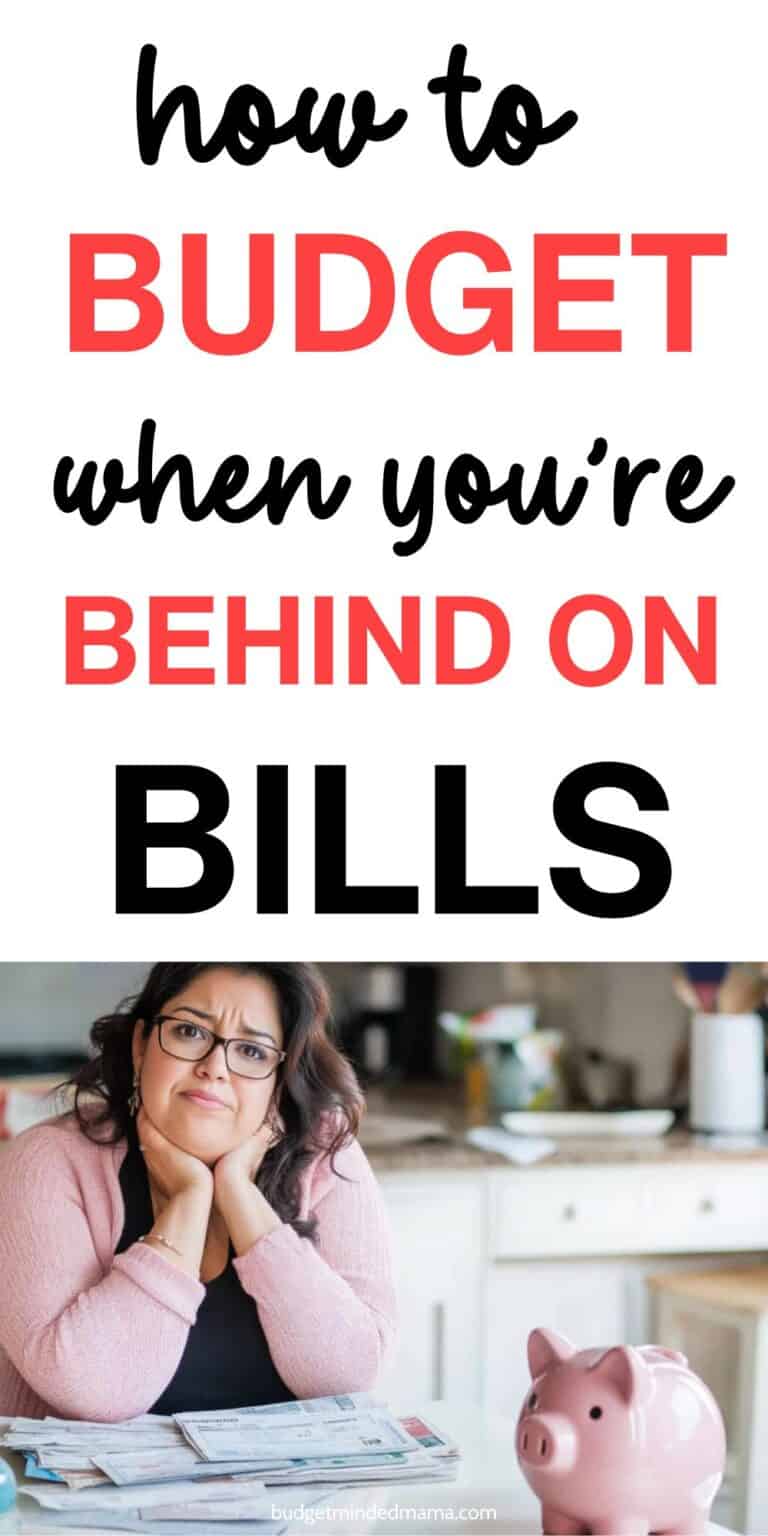I know the feeling—bills are piling up, and your bank account isn’t exactly cooperating.

It’s stressful, overwhelming, and honestly, kind of exhausting.
But here’s the thing: you can get back on track, and it doesn’t have to feel impossible.
Budgeting when you’re already behind is different from budgeting when things are stable, so the goal isn’t perfection—it’s progress.
Small, intentional steps will help you regain control without making life miserable.
I’m going to walk you through a simple approach that focuses on what actually works when money is tight.
No shame, no guilt, just a plan to help you breathe a little easier!
1. Prioritize Essentials First

When money is tight, the first step is making sure the essentials are covered.
This means food, housing, utilities, and transportation—everything you need to survive and keep working.
If you can’t pay everything, focus on keeping a roof over your head and food on the table first.
Credit cards, streaming services, and even some debt payments can wait if necessary.
It might feel uncomfortable to put some bills on hold, but survival comes first.
If you have a car loan, keeping up with payments is crucial so you don’t lose your way to work.
The goal here is to stop the situation from getting worse while you work on a plan.
Once the essentials are handled, you can start tackling everything else with a clearer head.
2. List Every Bill and Expense

When money is stretched thin, guessing won’t cut it—you need a clear picture of what’s due and when.
Write down every single bill, even the ones that feel small, because those add up fast.
Sort them by urgency, focusing on anything that will affect your ability to live and work first.
For example, if your rent is due next week and your phone bill isn’t due for three more, you know where your focus needs to be.
Be honest about anything that’s overdue so you can figure out the best way to catch up.
Seeing it all laid out might feel intimidating, but it puts you in control instead of letting the bills control you.
If you want to make this easier, try using a budgeting app or a simple spreadsheet.
Knowing exactly where you stand helps you make better decisions without the constant stress of wondering what’s next.
3. Contact Creditors and Service Providers

If you’re behind on bills, ignoring them won’t make them disappear—but calling the company might buy you some breathing room.
Many creditors, landlords, and service providers are willing to set up payment plans or extend due dates if you explain your situation.
The key is to call before things get worse, not after a service is already shut off or a late fee is added.
For example, if your electric bill is overdue, the power company might be able to split the balance into smaller payments instead of demanding the full amount upfront.
Credit card companies sometimes offer hardship programs that temporarily lower your minimum payment.
These conversations might feel awkward, but they can make a huge difference in how quickly you bounce back.
Most importantly, you’ll avoid unnecessary penalties that make catching up even harder.
A 10-minute phone call could save you from a whole lot of stress down the road.
4. Cut Non-Essential Spending

If money is tight, it’s time to hit pause on anything that isn’t absolutely necessary.
This doesn’t mean you have to cut out every little joy in life, but you do need to be intentional about where your money goes.
Subscriptions, takeout, and impulse buys are usually the first things to go.
Let’s say you’re paying for five different streaming services. Pick the one you use most and cancel the rest—at least for now.
Groceries can be another sneaky expense, so stick to simple, budget-friendly meals instead of pricier convenience foods.
Even small changes, like making coffee at home instead of grabbing it on the go, add up faster than you’d think.
The goal isn’t to make yourself miserable—it’s to free up as much cash as possible for catching up on bills.
Once you’re in a better spot, you can ease some of these things back in.
5. Adjust Due Dates to Match Your Pay Schedule

If your bills and your paychecks don’t line up well, it can make catching up even harder.
Many companies allow you to change your due date, which can help you avoid late fees and better manage your cash flow.
Call your utility providers, loan servicers, or even your landlord (if they’re flexible) to see if you can shift your payment dates closer to payday.
For example, if your rent is due on the 1st but you get paid on the 5th, ask if you can move your due date to match your income schedule.
Credit card companies often offer this option as well, making it easier to avoid missed payments.
Spreading out your bills instead of having everything hit at once can make budgeting less stressful.
This small adjustment can give you a little more breathing room while working to get caught up.
6. Set Up a Bare-Bones Budget

A bare-bones budget is exactly what it sounds like—the absolute minimum you need to get by.
It helps you stretch every dollar so you can stay afloat while working on catching up.
Start by listing your income and subtracting your essential expenses:
- rent
- food
- utilities
- transportation
Anything left over goes toward paying off overdue bills, and if there’s nothing left, it’s time to find ways to bring in extra cash.
So, if your grocery budget is usually $600 a month, for example, see if you can cut it to $400 by sticking to simple, homemade meals.
The goal here isn’t to live like this forever, just long enough to get back on track.
A tight budget now means more freedom and less stress later.
7. Find Quick Ways to Increase Income

Cutting expenses is important, but sometimes, the fastest way to catch up on bills is to bring in extra cash.
Look for quick, short-term ways to boost your income, even if they’re not part of your long-term plan.
Selling unused items, picking up a side gig, or taking on extra shifts at work can all help close the gap.
Clothes, electronics, or furniture you don’t use can be sold on Facebook Marketplace or eBay to bring in money fast.
Driving for a delivery service, babysitting, or doing freelance work online are also solid options.
Even an extra $100 a week can make a huge difference when you’re behind.
This isn’t about finding a perfect job—it’s about doing what you can right now to make things easier.
8. Avoid Taking on New Debt

When money is tight, it’s tempting to use credit cards or payday loans to stay afloat—but that can make things worse in the long run.
Borrowing money to pay bills only pushes the problem down the road and usually adds interest, making it even harder to catch up.
Instead, focus on working with what you have and finding extra income where you can.
If you’re struggling with a large bill, try negotiating a payment plan before putting it on a credit card.
Taking on new debt might feel like a quick fix, but it often turns a short-term problem into a long-term struggle.
The goal is to move forward, not dig a deeper hole!
9. Use Cash or Prepaid Cards for Daily Spending

When money is tight, it’s easy to lose track of what you’re spending, especially with debit and credit cards.
Switching to cash or prepaid cards for everyday purchases can help you stay within your budget.
If you only have $50 for groceries this week, using cash means you can’t accidentally overspend.
This method is especially helpful for categories like food, gas, and entertainment, where spending can creep up fast.
Seeing your money physically leave your hands makes it easier to stay mindful of your spending.
It’s a simple way to avoid overspending when every dollar counts.
10. Focus on One Bill at a Time

Trying to catch up on everything at once can feel overwhelming, but breaking it down makes it more manageable.
Instead of spreading your money too thin, focus on tackling one bill at a time while keeping up with essentials.
If you’re behind on multiple bills, start with the smallest one or the one with the worst consequences.
For example, if your water bill is $50 behind and your credit card is $500 behind, knocking out the smaller bill first gives you one less thing to worry about.
Making progress—even small progress—keeps you motivated and helps you feel more in control.
Catching up might take time, but each step forward is a step toward financial stability.
Getting Back on Track, One Step at a Time
Catching up on bills when you’re already behind isn’t easy, but it is possible.
The key is to focus on what matters most, take small, manageable steps, and give yourself grace along the way.
No matter how overwhelming things feel right now, you don’t have to fix everything overnight.
And remember—this situation is temporary.
With the right approach, you will get through it.
Keep going, and don’t be afraid to ask for help when you need it!



